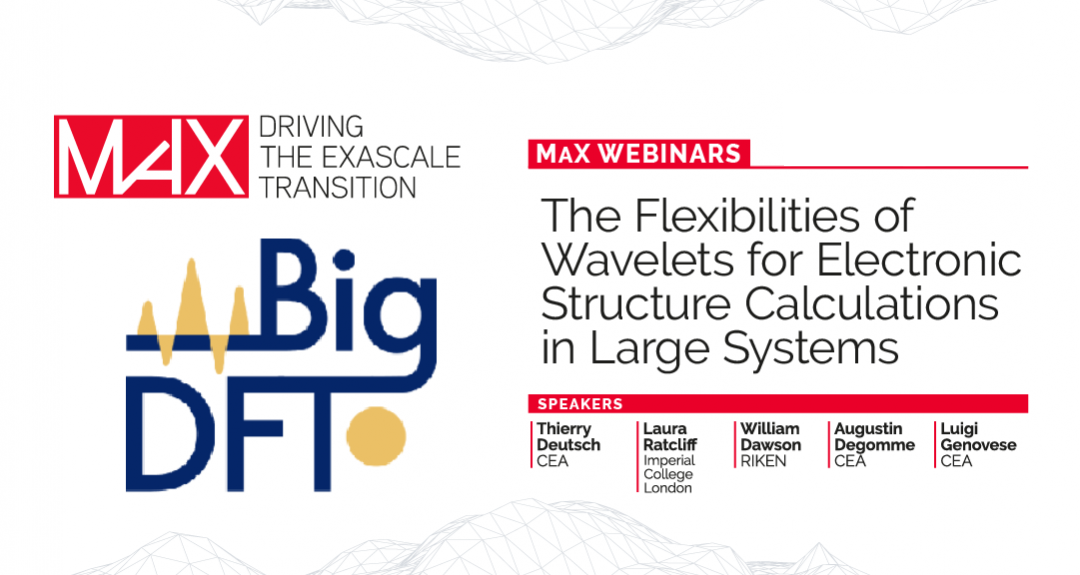
The video recording and slides from the webinar given by our BigDFT collaborators on the 12th of November 2020, titled “The Flexibilities of Wavelets for Electronic Structure Calculations in Large systems”, is now available on the MaX Centre’s webpage. The webinar presents some of the features made possible by the peculiar properties of Daubechies wavelets, and it focuses on the usage of Density Functional Theory (DFT) for large-scale systems.
The BigDFT project started in 2005 with the aim of testing the advantages of using a Daubechies wavelet basis set for Kohn–Sham (KS) DFT with pseudopotentials. This project led to the creating of the BigDFT code, which employs a computational approach with optimal features of flexibility, performance, and precision of the results. The code has been partially developed at BSC by Stephan Mohr.
BigDFT is an electronic structure pseudopotential code that employs Daubechies wavelets as a computational basis, designed for usage on massively parallel architectures. Among the various actions carried out in the last few years, the entire code package has been restructured and redesigned such as to be distributed as a collection of independent pieces of software, packaged in separated modules.
This webinar shows how the localized description of the KS problem, emerging from the features of the basis set, is helpful in providing a simplified description of large-scale electronic structure calculations. During the presentation, the webinar highlights how the MaX consortium enabled the possibility of implementing advanced functionalities in the context of pre-exascale computing.
The session was organized as follows:
- Overview of the webinar topics – Luigi Genovese
- Motivations for BigDFT formalism: overview of Daubechies wavelets in DFT – Thierry Deutsch
- The operators of BigDFT code. From convolutions to Poisson Solver in High-Performance Computing – Luigi Genovese
- Approach to Large Scale Systems with BigDFT: from Ground State to electronic excitations – Laura Ratcliff
- Complexity Reduction: how BigDFT basis set provides insights on electronic structure calculations of macromolecular systems – William Dawson
- Software approach of BigDFT: from modularization to containers. Aiida workflows with PyBigDFT – Augustin Degomme
- Concluding Remarks and Outlook – Luigi Genovese
The BigDFT code is extensively used in our BSC Fusion Group. Previously, we have studied the scalability and electronic structure of Linear Scaling DFT methods for the simulation of metals such as tungsten and tantalum. We currently use BigDFT to study the structural and electronic properties of defective tungsten, a key material for fusion technologies, using Linear Scaling Density Functional Theory (LS-DFT) methods. This project is being carried out by the BSC researchers Julio Gutiérrez, Stephan Mohr, and Mervi Mantsinen, within the framework of FusionCAT (001-P-001722) and has been recently awarded at Spanish Supercomputing Network RES (RES project QS-2020-3-0026), as commented in a previous post.
Source: www.max-centre.eu
The FusionCAT project with reference number 001-P-001722 has been co-financed by the European Union Regional Development Fund within the framework of the ERDF Operational Program of Catalonia 2014-2020, with the support of Generalitat of Catalonia.
